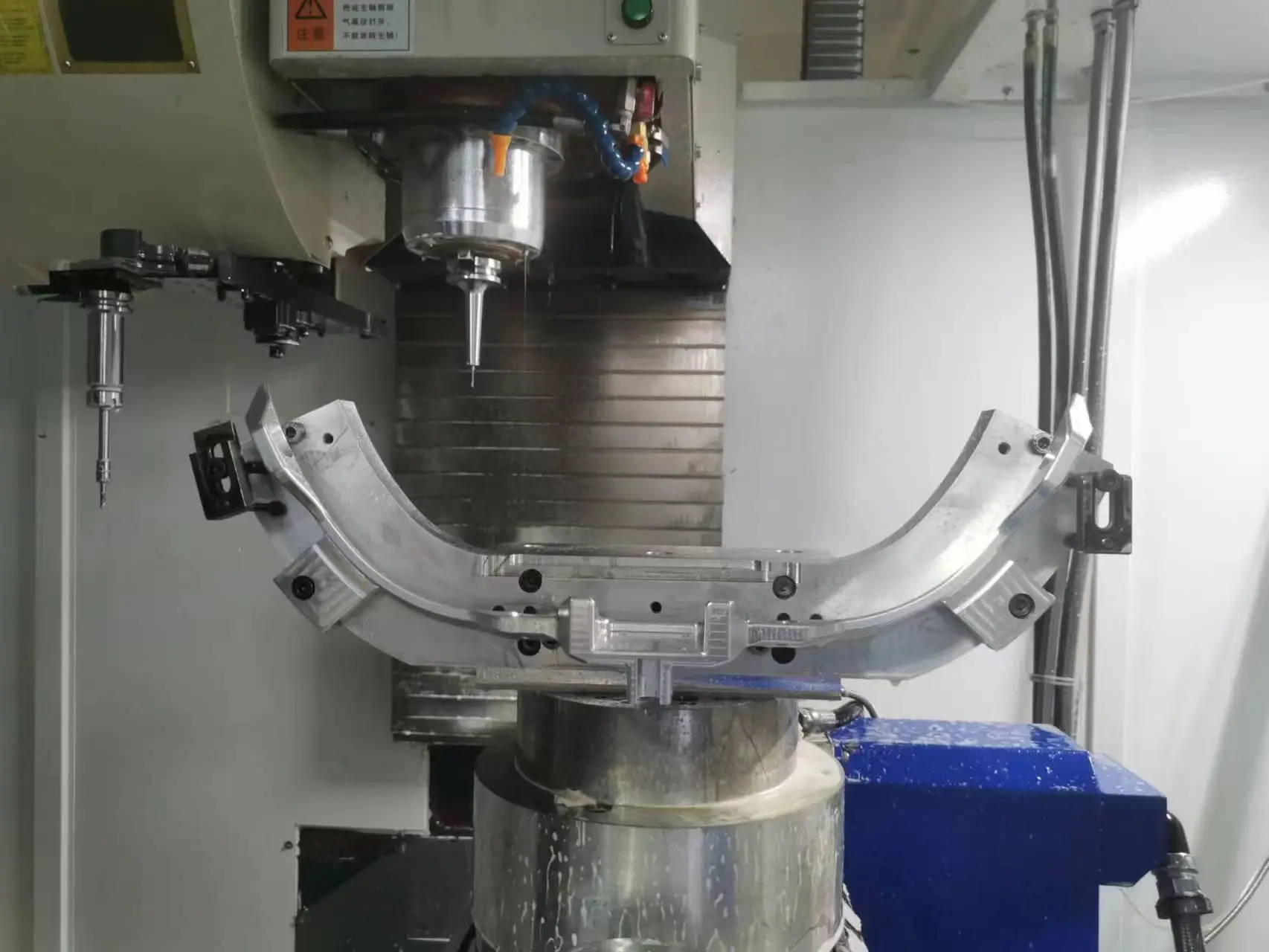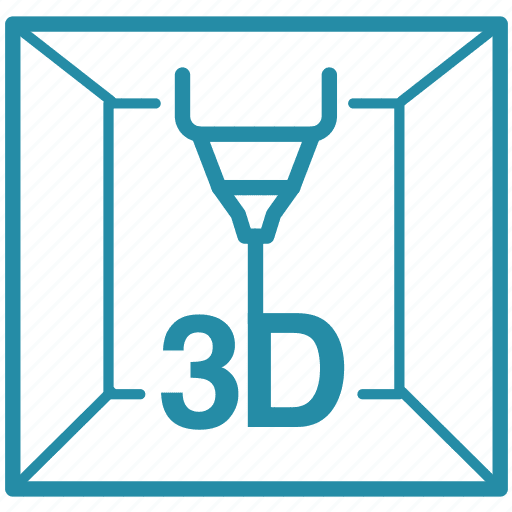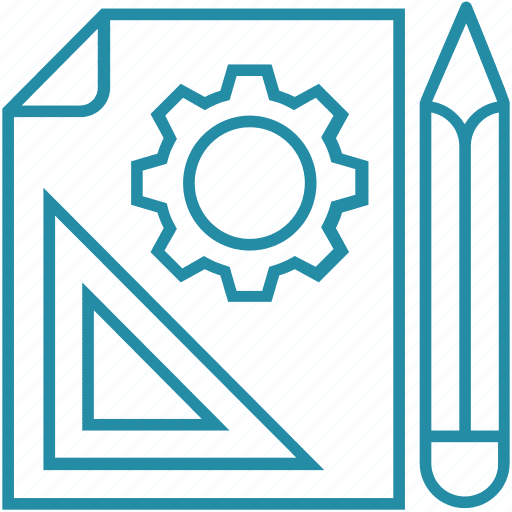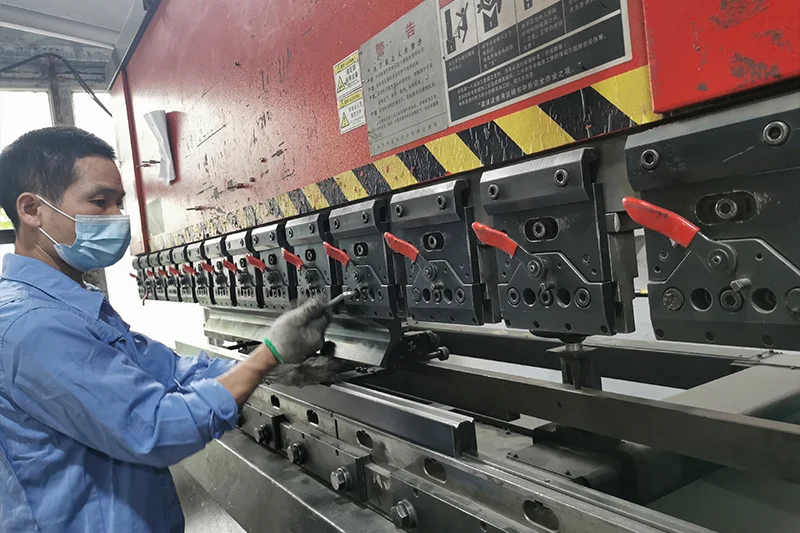- Capabilities
-
CNC Machining
Tight tolerance and 20+ finishes 3, 4 , 5 axis, as fast as 2 days -
Sheet Metal Fabrication
High-precision, on-demand sheet metal cutting and bending. -
3D Printing
SLA, SLS,MJF,SLM, FDM 3d printing with post treatment. -
Vacuum Casting
Production quality parts without the tooling investment.
-
- Solutions
Rapid Prototyping
Fastest lead time of high-quality prototypes at minimal cost.
Low Volume Production
From one-off prototyping to low-volume production.
Mechanical Assembly
Custom assembly for project-specific needs.
Custom Package
Ready to help you prompt your brand.
- Sources
Materials
Select from 100 more types of metals and plastics.
Finishes
Select from 20 more types of surface fishes.
Industries
Providing precision machining and manufacturing solutions.
Cases
How we assist our clients in bringing their projects to fruition.
- Company
Quality Assurance
Consistent quality, every time.
About Us
Your go-to manufacturer for custom parts.
Newsroom
Learn updated news about ECOREPRAP.
Best Method of Metal Fabrication Prototyping: The Complete Guide in 2023
Updated: December 07, 2023
Introduction
Every manufacturer has to deal with metal fabrication prototyping on and off. It is one of the most effective ways to move from an idea expressed in a 3D model of a component to the first samples of actual metal parts.
Typically, the problem is to select the most appropriate, to a particular situation, prototyping method. This comprehensive guide will help you to learn more about metal fabrication prototyping.
1. What is Metal Fabrication Prototyping
For starters, metal fabrication is simply the manufacturing of metal components of raw material or workpieces made from metal. It is needed in nearly any industry from medicine and food processing to automobiles and airplanes ones.
To run the production of components of a new type, it is obligated to choose appropriate manufacturing techniques. It is also necessary to fully prepare appropriate samples for testing.
The thing is, metal fabrication prototyping is this very technique to obtain necessary manufacturing samples of new products. They can be used for prior testing of functionality and examination of a design.
Prototyping is also needed for a smooth transition from a 3D digital model to small-scale production and then for large-scale manufacturing.
It is explained with the necessity to choose appropriate manufacturing techniques that particular CNC machines can implement. Such intervention aims to design the full manufacturing cycle for a particular component starting from raw materials and ending with metal finishing techniques.
In such a manner, metal fabrication prototyping can be defined as creating a metal sample of a new component from a particular material and with a specific design.

2. Why Make a Metal Prototype Instead of a Plastic Prototype?
Let me guess, have you heard many times about the advantages of plastic prototyping, such as 3D printing, over metal prototyping? Well, in some cases, we may recommend plastic prototypes.
Here’s the list of situations when you need to apply for plastic prototyping first.
- When your components serve only aesthetics and not functional purposes.
- When the design is so intricate that you need to minimize expenses on unsuccessful metal fabrication attempts by trying plastic 3D prototyping, or so, first.
- When you need a lot of samples to be distributed first, before actual manufacturing.
In any other situation, for instance, when you just need to test both the sample and the manufacturing procedures,you are highly recommended to apply to full-cycle metal prototyping. And here is the detailed explanation to this point:
If you intend to manufacture new metal components, you need, in the vast majority of cases, to have samples of your future products for testing. You can test parts for their mechanical and physical properties unless they are made exactly from the same material, you have specifications for.
Any manufacturer has a quality assurance department. It is responsible for that the company has documented evidence that its products and manufacturing processes suit the existing standard and normative documents.
Before a Quality Assurance department can allow the production of components for sale, they must have a sample of the products tested. And only actual metal prototypes suit this purpose.
Moreover, you need to select particular manufacturing techniques such as milling, turning, grinding, drilling, etc., so your production line is prepared to manufacture components for sale.
In case you prepared only plastic components using 3D printing, for instance, you do not have CAD models translated in G-coded files, needed for any CNC machine. As a result, you still have plenty of complicated testing and coding before manufacture can be run.
Unless your products have decorative purposes only, you are highly benefited from metal fabrication prototyping.

3. What is the Best Method to Make Your Metal Prototypes?
The scary part is that the wrong choice would not enable you to manifest the strengths of your products fully. It will also result in extra costs.
Luckily, we have got you covered. In this section, we will detail every method of metal prototyping so you can learn more about them.
Metal Machining Prototypes
Exactly the process that comes to mind first when prototyping is needed. Metal CNC machining is simply the subtractive process that reiterates future operations for large-scale manufacture but in smaller quantities.
Metal machining prototypes are also referred to as rapid prototyping. You may order third-party services, and a team of professionals will assist you in choosing the most appropriate material and manufacturing techniques.
They will G-code your CAD models, select appropriate CNC machine and tooling, and run production of test samples using subtractive machining, using mills, routers, drills, lathes, etc.
As a result, you have components manufactured precisely by your design and specifications. You also have files that can be integrated into your machinery, and the large-scale manufacture can be run easily.
As a bonus, their-party service providers may test your prototypes by the requirements of your Quality Assurance department. And any legal concerns will be covered.
Strengths
- Perfectly compatible with large-scale manufacturing processes.
- Comparatively affordable prototyping.
- Suitable for any design.
- Suitable for any material.
Weaknesses
- Typically is associated with material wastage.
- Requires skilled labor.
Metal 3D Printing Prototypes
Being considered a replacement to 3D plastic printing prototyping, metal additive machining can be a suitable process for sample production.
There are two metal additive manufacturing (AM) technologies: selective laser melting (SLM) and direct metal laser sintering (DMLS).
The simple difference is that SLM employs fully melted to the state of liquid metals. At the same time, the DMLS technique requires metal powders that are precisely deposited to create a part.
In contrast to metal machining, AM prototyping does not imply cutting off metal chips of workpieces but adds layers of material until a design is obtained.
Unfortunately, 3D metal printed prototypes do not have a great finish and suit for examining the design and aesthetics of components only.
Strengths
- Comparatively affordable prototyping.
- Does not waste material.
- Does not require that skilled labor.
Weaknesses
- Is not helpful for further running of large-scale manufacturing as it does not produce G-coded files for CNC machines.
- Parts obtained do not have the same mechanical and physical properties as the future components intended to be produced.
- The range of materials is strictly limited.
Sheet Metal Prototypes
Sheet metals are simply flat pieces of metals fabricated for the ease of further machining. They are great for some functional industrial parts that are produced in square workpieces with simple designs.
Sheet metals can be formed using the following processes:
- laser cutting
- Bending
- Punching
- Spinning
- Welding
The following techniques can be used to machine sheet metals:
- Perforating
- Slotting
- Shearing
- Piercing
- Notching
- Curling
- And others.
As a result, you obtain a part with a simple asymmetrical design and great strength. Great accuracy also can be achieved in this process.
The scary part is that you may need up to 3 machines to create a complete sheet component. At the same time, a single, for instance, 5-axes CNC machine, can perform something similar.
Strengths
- Produced components have precise dimensions and are durable.
- Suitable for the production of large quantities of prototypes.
- Is somewhat helpful for further running of large-scale manufacturing as it produces G-coded files that, in some cases, may be useful for you.
Weaknesses
- Requires skilled labor.
- Parts obtained do not always have the same mechanical and physical properties as the future components intended to be produced.
- A range of materials is somewhat limited as not any metal can be machined into sheet pieces.
- The range of designs is limited.
- Is the time consuming process.
Metal Casting Prototypes
In case you intend to produce components using metal casting, such prototyping must be your choice.
Metal casting implies melting metal to the liquid state and pouring it into a mold to form a component. In such a manner, most durable and high-quality parts can be obtained.
This process is typically a large-scale manufacturing technique, as designing and producing mold is a complicated and expensive process. It is usually done by already described 3D printing techniques, for instance.
In case you just need a small batch of prototypes, it is unlikely that metal casting is a cost-effective choice. But, if the metal casting is already the intended process for large-scale manufacture, you can receive perfect samples of both manufacturing techniques required and precise samples.
It is also great from the perspective of quality assurance. It is so because samples prepared with the same production technique as employed by a manufacturer, can serve as the basis for validation of the process.
Strengths
- Produced components have precise dimensions and are extremely durable.
- Mold can be used further in large-scale production.
- If a manufacturer employs metal casting on a regular basis, such prototyping facilitates the process of running a new production cycle.
- Suitable for the production of large quantities of prototypes.
Weaknesses
- Requires extremely skilled labor.
- Is an expensive and time-consuming process.
- The tooling required is rare and expensive.
- Is unlikely to be cost-effective if a manufacturer does not employ metal casting regularly.
Metal Extrusion Prototypes
This process is somewhat similar to metal casting. Metal extrusion is the forcing of a heated material through a die with the desired cross-section. The die shapes the comparatively soft metal in a required design, forming an elongated component.
As a result, a component with uniform cross-sections over the entire length is created. It further can be cut into equal parts, each of which is considered a distinct component.
The common types of metal extrusion are the following:
- Direct extrusion
- Indirect extrusion
- Hydrostatic extrusion
- Vertical extrusion
- Hot extrusion
- Cold extrusion
- Impact extrusion
As well as metal casting, metal extrusion can be regarded as the best choice of prototyping technique if this method is the one commonly employed on manufacture.
Strengths
- Produced components have precise dimensions and are extremely durable.
- Does not require skilled labor.
- Dies can be used further in large-scale production.
- If a manufacturer employs metal casting on a regular basis, such prototyping facilitates the process of running a new production cycle.
- Suitable for the production of large quantities of prototypes.
- It is affordable prototyping.
Weaknesses
- Requires extremely skilled labor.
- It is unlikely to be cost-effective if a manufacturer does not employ metal casting regularly.
- The range of suitable materials is limited.
4. Things to Keep in Mind Before Choosing Metal Prototypes Methods
Typically, reading bare descriptions of methods of metal prototyping does not facilitate the decision-making process. Here is the list of things to consider while selecting a suitable approach to particular batches of components.
Material
As stated multiple times in the above text, not every type of metal prototyping is suitable for any material. As a rule of thumb, you are limited the most by 3D printing. And you have the broadest range of options with metal CNC machining.
In case you have something particular on your mind, you may request a quote from a third-party service provider. This way, you will see if a certain material can be used in a specialized prototyping method. Otherwise, just stick to CNC machining, and you are good to go with any type of metal.
Design
And here is the tricky part. As a rule of thumb, the most intricate designs can be created using 3D metal printing or complex CNC metal machining. These two methods enable the creation of any shapes and most inner structures within a workpiece comparatively easily.
In contrast, metal extrusion is the most rigid method. Using such an approach, you can make prolonged components of simple shapes with the most primitive design.
Metal casting offers a limited choice of inner structures to create in design. It is so because while pouring metal inside a mold, some spaces may be left unfilled properly. But it is rare when such a method is used for making intricate designs.
Sheet metal prototyping is somewhere between CNC metal machining and metal casting, in terms of design options. You cannot bend flat pieces of metal in any way you wish. So, regardless of the vast range of inner shapes, the basic form of a component is always rather primitive.
Cost
In most cases, the price of prototyping services you will be offered depend on the following factors:
- The region where a service provider is located.
- Transportation costs (delivery of materials and prototypes)
- The size of your order.
- The urgency of your order.
- Design of your components.
- Dimensions of your components.
- And many more.
As you can see, we do not even mention the prototyping method itself, as the cost per component will significantly vary because of numerous factors.
What you should know is that other things being equal, metal 3D printing and CNC machining cost less than the three other prototyping strategies. It is explained by the high costs of sheet metals, the high prices of dies and molds, and the time-consuming attributed to the three processes overall.
Strength
The thing is, you mostly need prototypes for further testing, rather than just for the review of the design or presenting samples to buyers and stakeholders. You need your prototypes to be as close to the actual intended components as possible. To meet this requirement, you should choose your approach wisely.
As a rule of thumb, you should choose the method that is closer to the one you will be using in your production cycle. This way, your components for testing will have the same properties as the intended-manufactured ones.
Alternatively, you should consider that 3D-printed metal parts are completely unsuitable for testing as they are weak and can easily be crushed.
At the same time, parts obtained using metal casting, metal extrusion, and sheet metal workpieces tend to be strong generally. Such components are more durable than ones that are manufactured using metal machining (CNC machining is regarded as a benchmark).
5. Final Take
It is strongly advised that you try to choose prototyping methods equal to your manufacturing approach. This way, you address issues with Quality Assurance and acquire experience in making the exact component. It will be extremely helpful in further manufacturing.
If you are unsure about the prototyping method, just stick to CNC metal prototyping as the gold standard of metal machining.
6. FAQs
6.1 What is prototype fabrication?
It is simply the method of creating samples of components for further testing of their properties and the manufacturing technique itself.
6.2 Metal casting or metal extrusion?
Depending on the intended purposes of your components, both techniques are equally usable.
6.3 What is the purpose of the prototype?
Prototypes are needed to facilitate the running of a new production cycle. They are used to prove the properties of a product, test manufacturing techniques, and examine the designs.
Let's get your projects started, together!
Get custom parts machined in high quality, delivery on time.

























